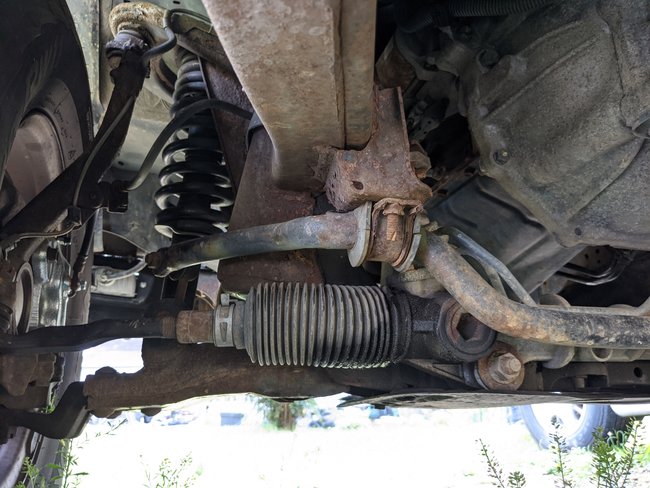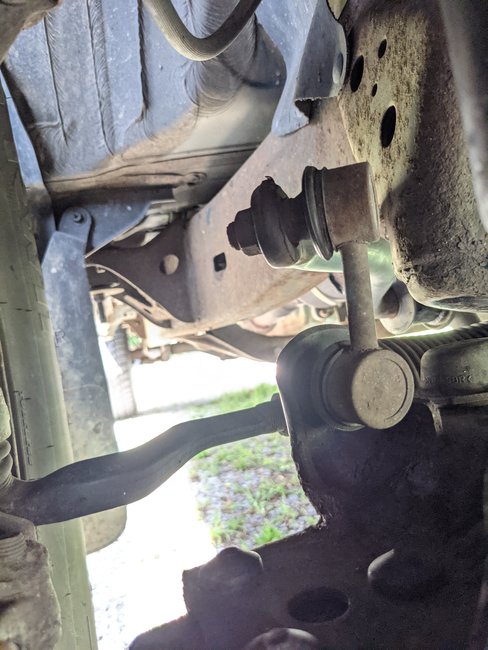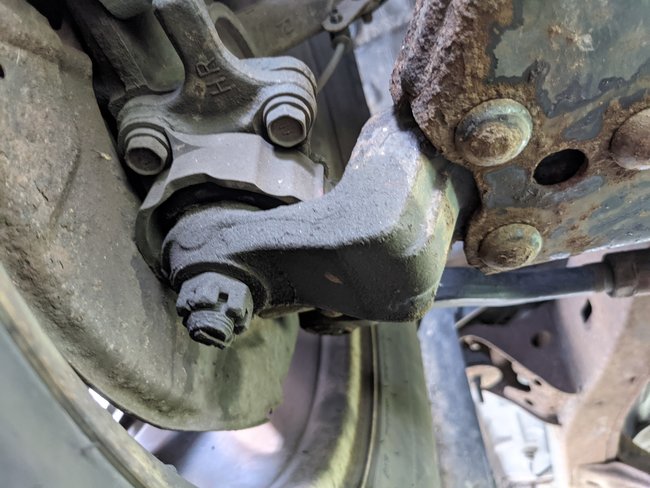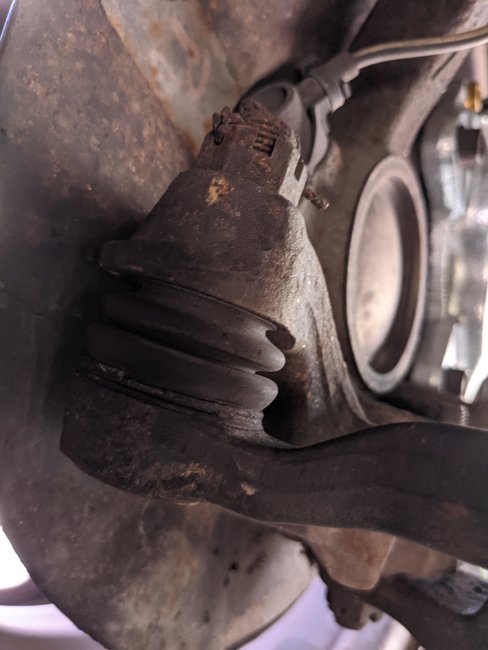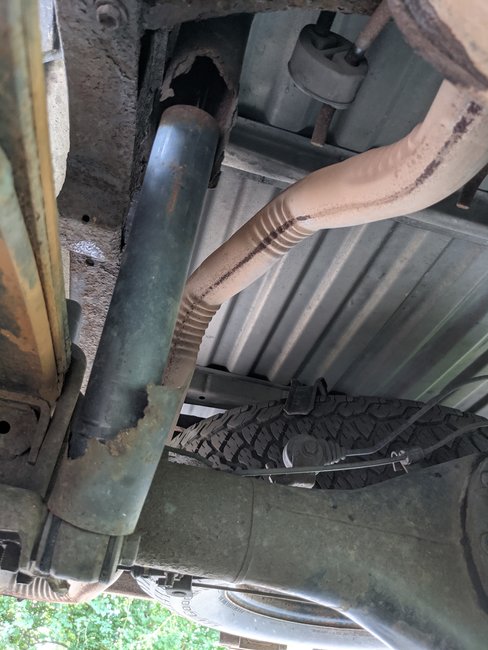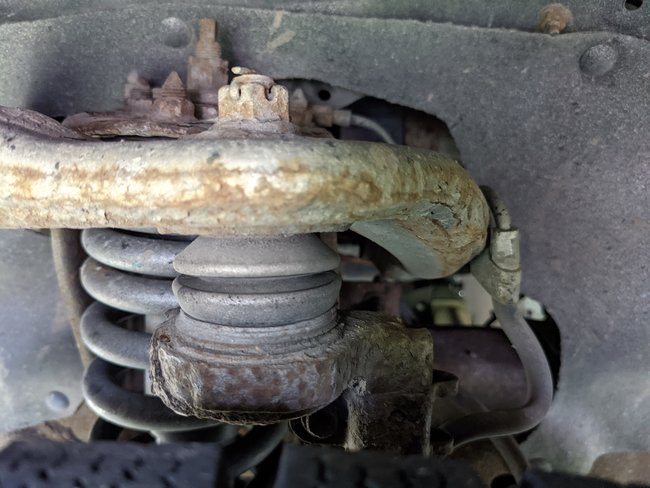-I can move the sway bar link with my hands no problem.
-Inner tie rod boots are covered in oil and with the wheel jacked up I could pull on it and get some movement.
-Truck's suspension parts mostly do not have grease fittings. (Would grease them with a needle adapter if I could determine they have more life and that's not dumb.)
-None of the boots are torn.
-I tried a basic suspension test (wiggle back & forth side to side and up and down) Didn't feel anything loose but not sure I did it right.
-The steering knuckle has a little grease/oil around it
-The control arm bushings visually look a little loose to my untrained eye but I didn't get movement out of them but again but sure if I tested correctly.
-Struts are not leaking
Note: I plan on doing the rear brakes next but haven't yet. They are squeaking occasionally, I'm pretty sure they are overdue, so that may also be a factor.
Questions
1. Is being able to move the bar link by hand a sign it's bad?
2. Does the condition of the inner tie rods sound like they need to be replaced? Could it be something else?
3. Should I wait until the above things get done to drain/refill Power Steering? It was a little low, and dirty. Reservoir very gunky on the outside.
4. What else should I look at or troubleshoot? Does it seem like I'm on the right track? What else would someone check for these symptoms?
Lastly regarding the rear suspension, the rear shock absorbers don't look the best (see pic) but I'm wondering when exactly they need replacement. No signs of leakage. Just rusty. And the bushings are a bit cracked. Obviously they could be replaced in mostly curious about how urgent it is.
Pictures
1. Front suspension viewed from rear; leaky inner tie rod
2. Bar Link
3. Greasy steering knuckle
4. Lower ball joint
5. Rear Shock absorber
6. Upper Ball joint
*Components look the same on both sides
Wednesday, July 14th, 2021 AT 2:03 PM
